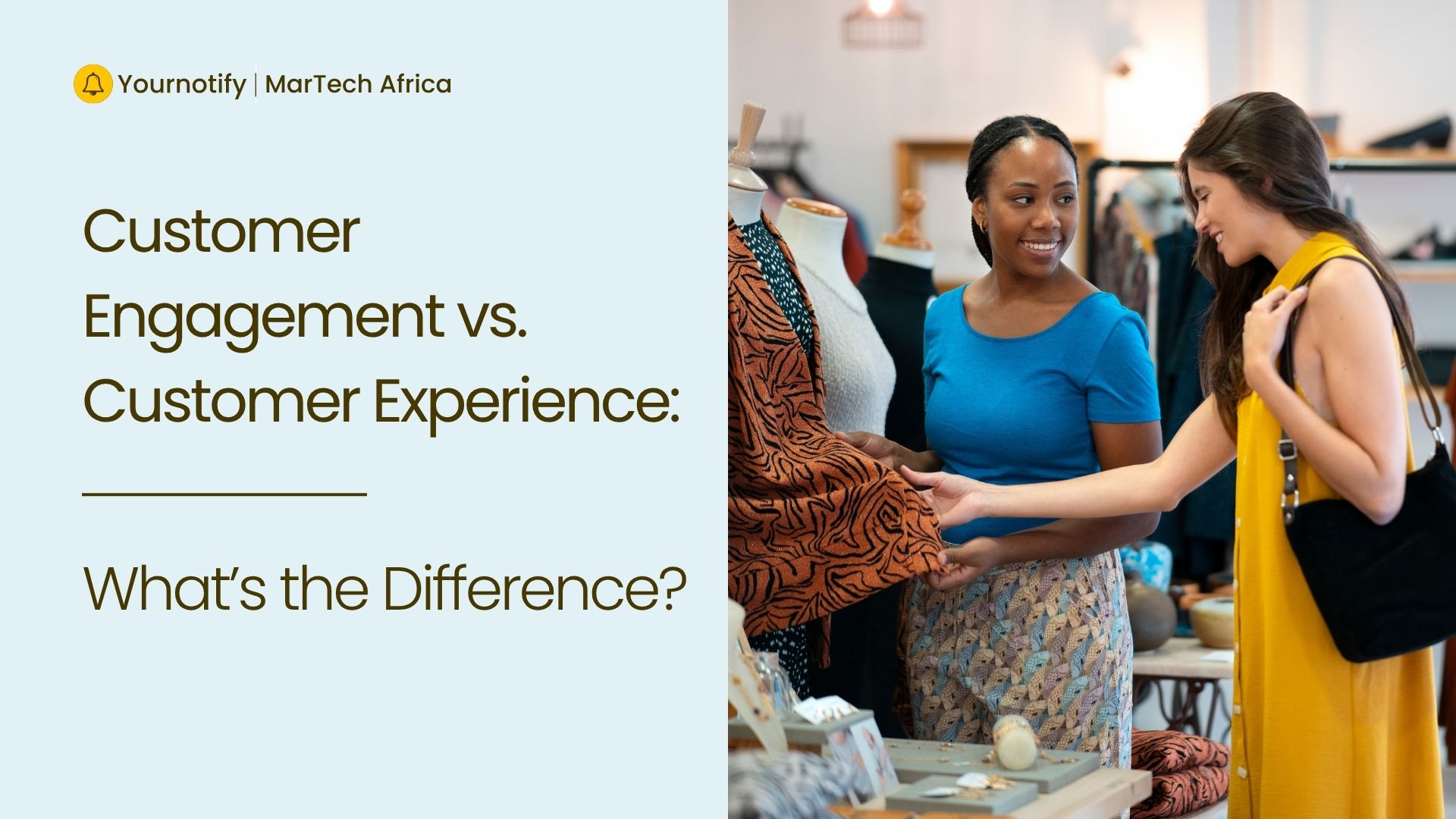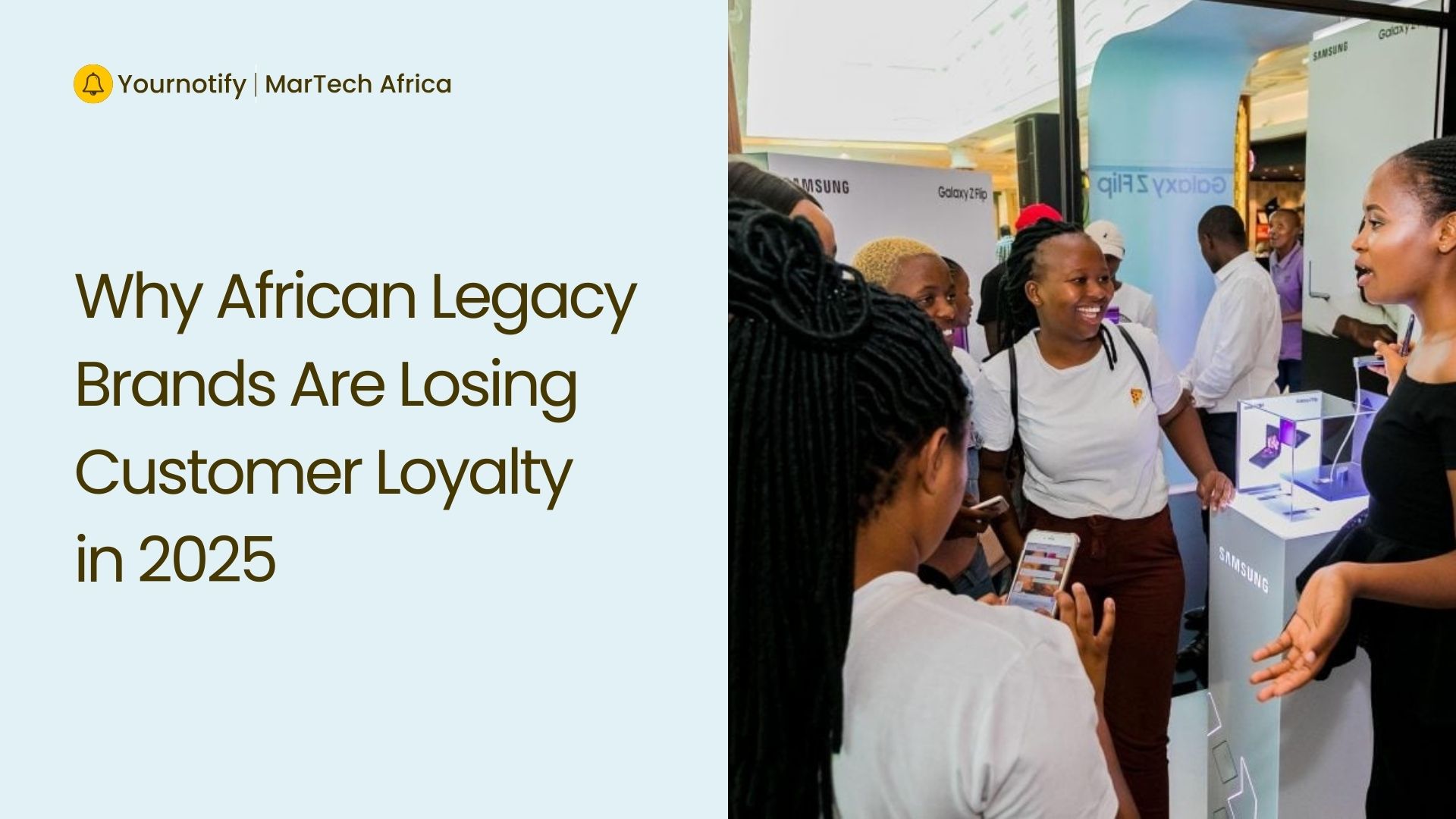In Africa’s rapidly evolving marketplace, legacy brands once stood as cultural icons, commanding deep trust,…

Customer Engagement vs. Customer Experience: What’s the Difference?
In the dynamic world of modern business, terms like customer engagement and customer experience are often used interchangeably. While they’re closely related and both essential to business success, they’re not the same thing. Understanding the distinction between the two is key to creating strategies that not only attract customers but keep them coming back.
What Is Customer Engagement?
Customer engagement refers to the interactions and touchpoints a brand has with its customers and how actively customers participate in these interactions. It’s about building relationships, driving connections, and fostering loyalty over time. A business that engages well with its customers builds trust, encourages repeat business, and creates brand advocates.
Examples of Customer Engagement:
- Responding to comments on social media
- Sending personalized email campaigns
- Hosting webinars or live Q&As
- Offering loyalty programs
- Creating community forums or online groups
Customer engagement is all about how your brand communicates and interacts with your audience to build ongoing, meaningful relationships.
What Is Customer Experience?
Customer experience (CX) is the sum total of a customer’s perception of a brand, based on every interaction throughout the customer journey, from the first time they visit your website to post-purchase support. For businesses that offer services, having experience is super important since they aren’t selling tangible products. Their worth lies in the services they deliver. Providing a smooth and easy experience is essential for keeping customers and standing out from the competition.
Key Components of Customer Experience:
- Website usability and design
- Speed and friendliness of customer service
- Product or service quality
- Checkout and delivery process
- Follow-up and feedback collection
Customer experience focuses on how a customer feels at each stage of their interaction with your brand.
Why Both Matter for Business Growth
Today’s customers are more empowered than ever. They don’t just want to buy a product, they want to connect with the brand and feel valued throughout their journey. Here’s why integrating both customer engagement and customer experience strategies is crucial:
1. Stronger Brand Loyalty
When customers feel genuinely connected to a brand through regular and meaningful engagement, and that connection is reinforced by consistently positive experiences, they begin to trust the brand. This trust becomes the foundation of loyalty.
Engaged customers are more likely to forgive small missteps, participate in community activities (like surveys or beta programs), and remain loyal even when competitors try to lure them away. Over time, these loyal customers often evolve into brand advocates, willingly sharing their experiences with others and defending your brand when needed.
2. Higher Customer Lifetime Value (CLV)
Customer Lifetime Value is a critical metric for sustainable growth and it is facilitated by both engagement and experience. A customer who is actively engaged is more likely to interact with content, respond to upsell and cross-sell offers, and remain open to future purchases. However, that only works if their experience with your brand continues to meet or exceed expectations.
3. Improved Word-of-Mouth & Referrals
In the age of online reviews and social media, customer sentiment spreads very fast, and positive sentiment is a powerful marketing tool. Customers who are both engaged (emotionally invested) and satisfied (experientially fulfilled) are more inclined to share their stories with friends, family, and peers. They post reviews, recommend your brand on social platforms, and refer others through word-of-mouth or referral programs.
This kind of organic advocacy is far more effective and trusted than paid ads. It can drastically reduce customer acquisition costs and expand your reach through authentic, trusted voices.
4. Valuable Customer Insights
Customer engagement generates behavioral data, Giving insights into what content they click on, how they interact with your brand on social media, what emails they open, and so on. On the other hand, customer experience feedback provides qualitative insights: how customers feel about their journey, what pain points they encounter, and what they value most.
When combined, these data streams offer a holistic view of your customer base. You can use this to identify trends, segment audiences, improve service design, and create smarter marketing strategies.
How to Align Engagement with Experience
To deliver maximum value, customer engagement efforts must reinforce not detract from the overall customer experience. Here’s how to align the two effectively:
- Personalize Interactions Using Customer Data
Don’t treat customers like numbers. Use behavioral and demographic data to personalize communication across channels, such as emails, push notifications, website content and social media. When customers receive messages and offers that are relevant to their needs, preferences, and past interactions, they’re more likely to engage.
- Ensure Consistency Across All Channels
A customer might interact with your brand via your website, mobile app, social media, customer service, or in-store and they expect a seamless, unified experience across all of them.
This means your brand voice, messaging, and service quality should be consistent regardless of the platform. Conflicting information or fragmented service can create friction and reduce trust.
- Ask for Feedback and Act on It
Engaged customers appreciate being asked for their opinions, and gathering feedback shows that you value their voice. But what matters the most to them is when you act on that feedback.
Use post-purchase survey tools and user experience interviews to gather insights. Implement changes based on what you learn and communicate those changes e.g: “Based on your feedback, we’ve improved…”.
- Train Your Team for Empathy, Speed & Clarity
Your frontline staff and customer service teams are key players in both engagement and experience. Train them to approach every interaction with empathy, listening actively and responding thoughtfully. Equip them with tools and scripts that prioritize speed and clarity, ensuring issues are resolved efficiently and customers feel respected.
A helpful support interaction can turn a frustrated customer into a loyal one, reinforcing both trust and engagement.
Customer engagement and customer experience are two sides of the same coin. One is active involvement, the other is emotional perception and together, they shape how your customers view your brand. Businesses that understand and invest in both don’t just sell products; they build lasting relationships. In a competitive marketplace, that can be your greatest advantage.
Related Content


